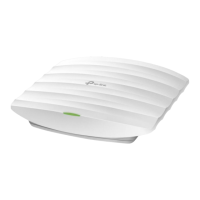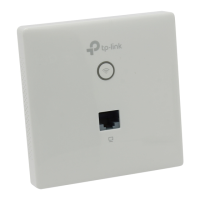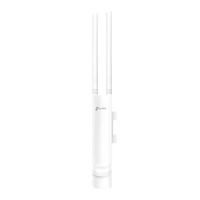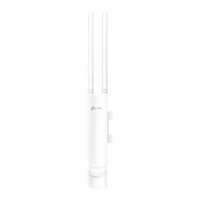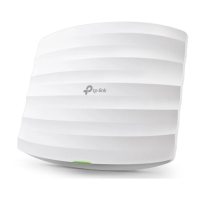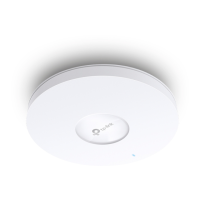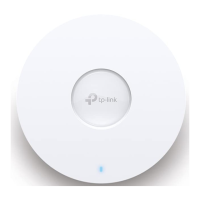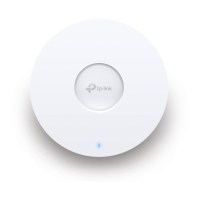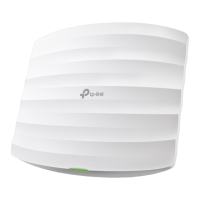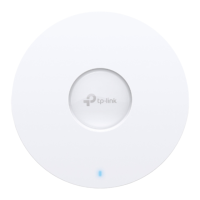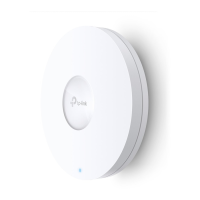Do you have a question about the TP-Link Omada EAP110 and is the answer not in the manual?
Explains how to choose and manage EAPs using Controller or Standalone Mode.
Guides connecting network devices like routers, PCs, and clients to the EAP.
Details the process of logging into the EAP and changing the default SSID.
Covers initial configuration and management of the EAP via web browser or app.
Sets up SSIDs, wireless modes, channels, and transmit power for the network.
Configures captive portal authentication for guest access.
Sets up Virtual LANs to segment traffic for different wireless networks.
Controls network access by allowing or denying specific MAC addresses.
Displays detailed information about the EAP, including device status and uptime.
Views wireless configuration settings, radio traffic, and LAN traffic statistics.
Checks connected client information, status, and manages client access.
Configures the EAP's IP address mode (Dynamic/Static) and related network settings.
Explains how to choose and manage EAPs using Controller or Standalone Mode.
Guides connecting network devices like routers, PCs, and clients to the EAP.
Details the process of logging into the EAP and changing the default SSID.
Covers initial configuration and management of the EAP via web browser or app.
Sets up SSIDs, wireless modes, channels, and transmit power for the network.
Configures captive portal authentication for guest access.
Sets up Virtual LANs to segment traffic for different wireless networks.
Controls network access by allowing or denying specific MAC addresses.
Displays detailed information about the EAP, including device status and uptime.
Views wireless configuration settings, radio traffic, and LAN traffic statistics.
Checks connected client information, status, and manages client access.
Configures the EAP's IP address mode (Dynamic/Static) and related network settings.
| Band Technology | dual |
|---|---|
| Frequency Band | 2.4 ghz |
| QoS Traffic Prioritization | yes |
| Ethernet Standard | 10/100 |
| Wireless Networking Standard | wi-fi 4 |
| Wireless Standard | n |
| 2.4 Ghz Streams | 1 |
| 5.0 Ghz Streams | 0 |
| Gigabit Ethernet Speed | no |
| Antennas | 2 |
| Firewall | other |
| Data Encryption | yes |
| Encryption Type | wep, wpa, wpa-psk, wpa2-enterprise, wpa2-psk |
| Security Features | rogue ap detection; ssid to vlan mapping; 802.1x supplicant |
| Ports | rj-45 |
| WAN Ports | 1 |
| Built In Modem | no |
| Bluetooth | no |
| System Requirements | microsoft windows 10/8/7/vista/xp |
| Height | 1.9 inches |
|---|---|
| Width | 7.1 inches |
| Net Weight | 2 pounds |
